Brittany Hawley’s Incredible Adventure with Her Faithful Sidekick, Griffin 🐕
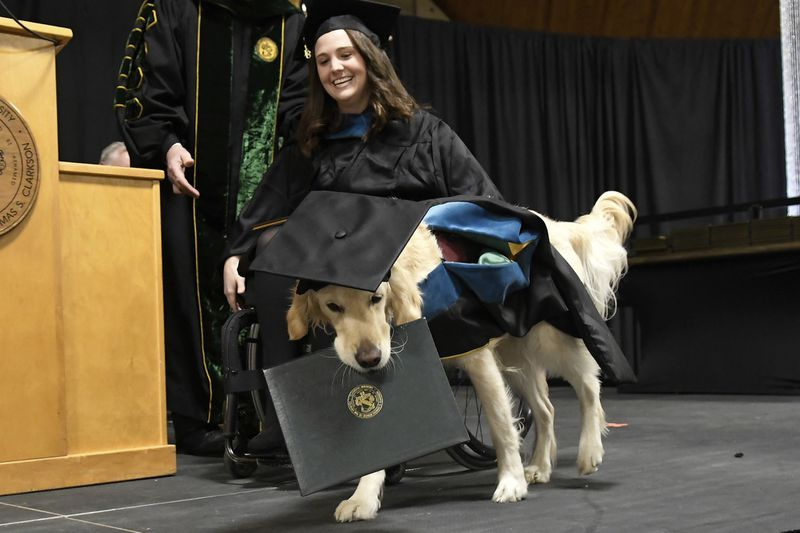
Let me introduce you to Brittany Hawley, a 25-year-old from North Carolina who has faced tremendous challenges due to a chronic neurological disease that confined her to a wheelchair when she was still in her teens. However, Brittany’s life changed for the better when she applied for a service dog to help her with her daily routines. That’s when she met Griffin, a golden retriever who would become her constant companion. This remarkable duo met through a special program called ‘paws4prison.’ This program trains inmates in West Virginia prisons to train highly skilled assistance dogs. When Brittany and Griffin first met, several dogs were presented to her, but Griffin stood out. Unlike some dogs that were wary of her wheelchair, Griffin jumped straight into Brittany’s lap and showed her affection.

Recently, Brittany accomplished an important goal by completing her master’s degree in occupational therapy from Clarkson University. This was a momentous occasion not only for her but also for her loyal companion, Griffin. Throughout Brittany’s years of study, Griffin played a crucial role in her life, attending classes with her, retrieving her phone, and actively participating in her community activities, social groups, and research projects. Griffin even supported her during her internship at Fort Bragg.
When the four-year-old golden retriever received his honorary diploma, it was a recognition of his “extraordinary effort, steadfast commitment, and diligent dedication to the well-being and student success” that contributed to Brittany’s achievements. Brittany proudly said, “I advocated for Griffin’s graduation from day one. He did everything I did.”
Brittany and Griffin proved to be an invaluable team for soldiers grappling with physical limitations and psycho-social issues. Griffin’s presence was so significant during therapy sessions that patients often referred to him as a co-therapist alongside Brittany. On a daily basis, Griffin helps Brittany with various physical tasks such as opening doors, turning on lights, and retrieving objects indicated by a laser pointer. However, what Brittany values the most about Griffin is his ability to comfort her during times of anxiety and depression, which has helped her manage the constant pain that she experiences. Brittany’s story demonstrates the remarkable impact that service dogs like Griffin can have, thanks to their highly specialized training that equips them to provide assistance and emotional support to individuals with disabilities, mental health conditions, and other qualifying circumstances.
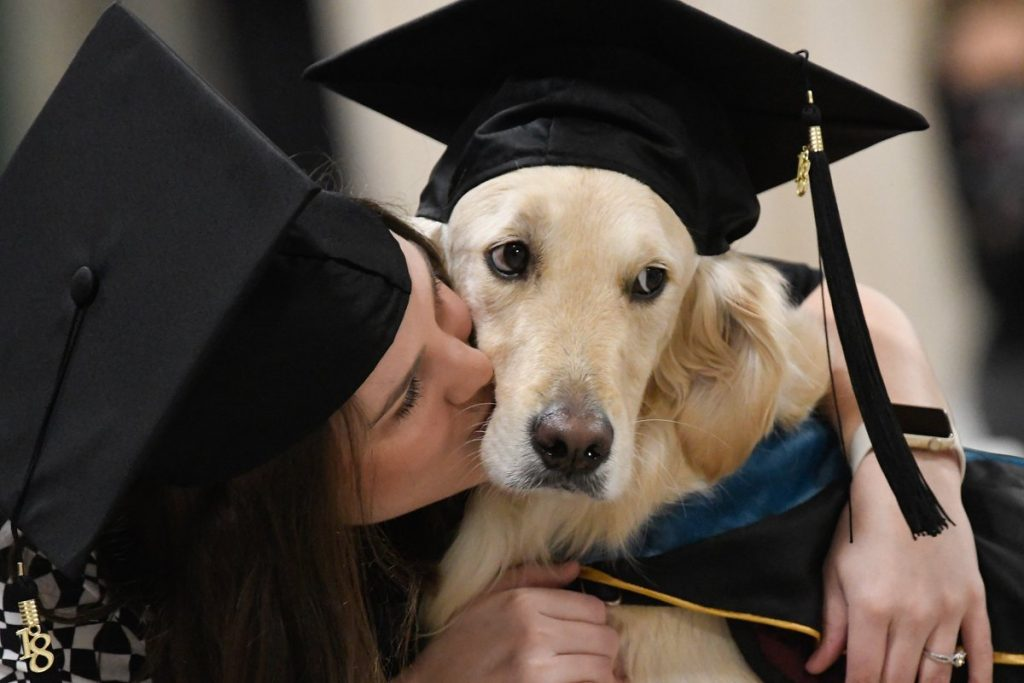
Brittany’s experience with her furry friend, Griffin, is a remarkable testament to the indomitable connection that exists between people and their canine pals. This bond effortlessly overcomes obstacles and acknowledges the influence of willpower and affection. 🌟🐕
See the Tragic Battle for Survival of an Abandoned Pregnant Dog: Against All Odds

Juanita, a sweet and innocent dog, found herself abandoned on the streets, struggling to breathe and unable to get up due to a distended belly filled with fluid. Passers-by ignored her plight until Karla Garcia, a kind-hearted individual, came to her rescue and took her to the vet.
The vet immediately recognized the severity of Juanita’s condition and took swift action. Multiple suctioning procedures were performed to remove the fluid from her abdomen, which was putting pressure on her lungs and making it difficult for her to breathe. Despite the challenges she faced, Juanita showed resilience and began to slowly recover with each procedure.
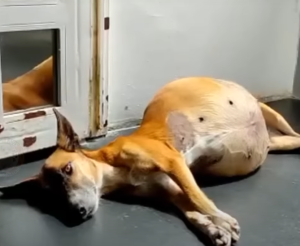
As Juanita grew stronger, her true personality emerged. She was playful, affectionate, and had a wagging tail that never stopped. The vet and her staff were captivated by Juanita’s spirit and made sure she received the best care possible. They even found her a foster home where she could continue her recovery in a warm and loving environment.
With each passing day, Juanita’s progress was evident. Day 14 saw her back to her old self, full of energy and life. Her remarkable journey touched the hearts of everyone who heard her story. She proved that with love and care, no obstacle is insurmountable.
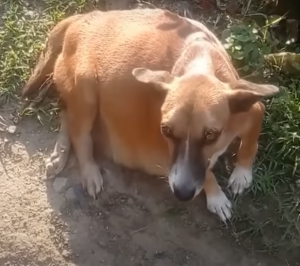
Day 21 marked a significant milestone in Juanita’s journey. Her foster family decided to adopt her and give her a forever home filled with love and security. Juanita’s transformation from a helpless stray to a cherished family member was a testament to the power of compassion and resilience.
Juanita’s story serves as a reminder that there are countless abandoned and neglected animals in need of our help. It only takes one person to make a difference, and Karla Garcia’s act of kindness saved Juanita’s life and brought her the love and care she deserved.

Juanita’s journey from abandonment to a loving home is a beacon of hope for all animals in need. Her story is a testament to the power of compassion, and a reminder that every life is valuable and deserving of love and care. Let Juanita’s story inspire us all to be a voice for the voiceless and make a positive impact in the lives of animals in need. Together, we can create a brighter future for them all.


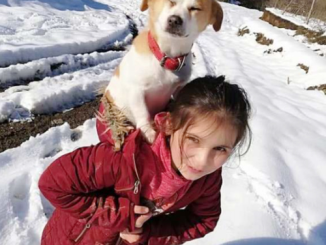
Leave a Reply